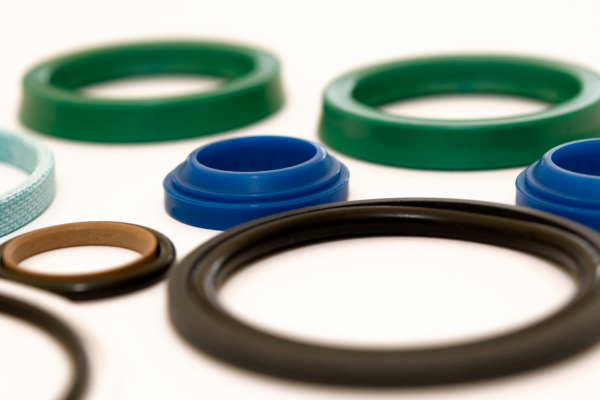
In the intricate world of mechanical engineering, where precision and reliability reign supreme, O-ring seals quietly play a pivotal role. Often overlooked by the casual observer, these small, doughnut-shaped components are indispensable in ensuring the integrity of countless machines and devices. From automotive engines to aerospace systems, O-ring seals create airtight and fluid-tight barriers that prevent leaks, protect equipment, and maintain optimal performance.
Bridging Expertise and Innovation with Expert Market Research
Understanding the complexities of the O-ring seal market and technology requires insightful analysis and strategic intelligence. This is where Expert Market Research (EMR) provides a competitive edge. EMR’s comprehensive research offers in-depth data on materials innovation, regional demand patterns, and emerging technologies in sealing solutions.
By tracking developments such as advanced elastomer formulations and sustainability-driven materials, EMR equips engineers and manufacturers with actionable knowledge. Their real-time insights enable businesses to anticipate industry trends, improve product designs, and enhance supply chain resilience. With EMR’s guidance, companies can innovate confidently in an evolving landscape where precision and reliability are paramount.
What Makes O-Ring Seals So Essential?
At first glance, an O-ring may seem like a simple rubber ring, but its design and functionality are anything but basic. The key to their success lies in their ability to compress within a groove, creating a tight seal between two or more parts. This compression blocks the passage of liquids or gases, preventing contamination and fluid loss.
O-rings are prized for their versatility. They work under extreme pressures, temperatures, and chemical exposures—making them ideal for diverse applications across industries like automotive, aerospace, hydraulics, and even food processing. The durability and flexibility of the materials used—ranging from nitrile and silicone to fluorocarbon and polyurethane—allow O-rings to meet highly specialized demands.
The Science Behind the Seal
The effectiveness of an O-ring depends on precise engineering. The shape and size of the groove, the material’s hardness, and the operating environment all influence performance. When the O-ring is compressed, it deforms to fill the space, forming a barrier that can withstand internal pressures trying to escape. This simple yet elegant principle relies on elasticity and surface contact.
Additionally, temperature extremes challenge the resilience of O-rings. For instance, high temperatures may cause some materials to harden or degrade, while low temperatures could make them brittle. Selecting the right material for the operating environment is crucial to ensure longevity and avoid failure.
Regional Insights: O-Ring Seal Applications in Asia Pacific
The Asia Pacific region has become a critical hub for manufacturing and industrial growth, driving demand for reliable sealing solutions. Countries like China, Japan, South Korea, and India lead in automotive, electronics, and heavy machinery production—all sectors heavily reliant on O-ring seals.
In India, for example, the expanding automotive and oil & gas industries require high-performance O-ring seals capable of withstanding demanding conditions. The versatility and cost-effectiveness of O-ring seals make them a preferred choice for sealing pumps, valves, and pipelines. As infrastructure development accelerates, the demand for efficient sealing technology continues to grow, reinforcing the importance of O-ring seals in regional industrial success.
Innovations Shaping the Future of O-Ring Seals
The future of O-ring seals lies in innovation. Advances in material science are enabling seals that resist higher temperatures, aggressive chemicals, and extreme pressures. For example, fluorosilicone and perfluoroelastomer compounds offer superior chemical resistance and thermal stability, expanding the scope of applications.
Moreover, the integration of smart technologies is on the horizon. Sensors embedded within seals could provide real-time monitoring of pressure, temperature, and wear—allowing predictive maintenance and reducing costly downtime. This fusion of mechanical reliability with digital intelligence promises to revolutionize how sealing solutions perform in critical systems.
The Role of Maintenance and Quality Assurance
Proper installation and maintenance of O-ring seals are as important as their design. Even the best O-ring can fail if not installed correctly—leading to leaks, contamination, or equipment damage. Understanding groove dimensions, surface finishes, and lubrication needs is essential for maximizing seal life.
Routine inspection and replacement schedules help avoid unexpected failures. In industries such as aerospace or pharmaceuticals, where safety is paramount, stringent quality control ensures every O-ring meets exacting standards.
Why O-Ring Seals Matter
While small in size, O-ring seals have an outsized impact on the reliability and safety of mechanical systems worldwide. Their ability to prevent leaks safeguards environmental health, reduces waste, and enhances equipment longevity. For industries pushing the limits of performance and precision, O-rings are the unsung champions of durability and efficiency.
In a world increasingly dependent on complex machinery, these humble seals quietly uphold the standards of engineering excellence—proving that sometimes, the smallest components make the biggest difference.











